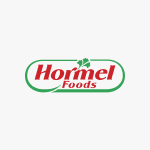Hormel Q3 2020 Earnings Report
Key Takeaways
Hormel Foods Corporation reported an excellent third quarter with record net sales of $2.4 billion, up 4% year-over-year. The company saw strength across its retail and deli businesses, along with a rebound in its foodservice business. Diluted earnings per share were $0.37, flat compared to the prior year. The company absorbed approximately $40 million in incremental supply chain costs related to COVID-19.
Record net sales of $2.4 billion, up 4%; organic net sales up 2%
Diluted earnings per share of $0.37, flat to last year
Cash flow from operations of $330 million, up 59%
Operating free cash flow of $242 million, up 72%
Forward Guidance
The company expects the fourth quarter to mirror many of the dynamics seen in the third quarter, including strength from retail businesses and the ongoing recovery in the foodservice business. Factors such as limited labor availability, production inefficiencies due to COVID-19 safety measures and unseasonably low levels of inventory are expected to challenge the ability to meet the increased demand for certain products.
Positive Outlook
- Expect strength from retail businesses
- Expect ongoing recovery in foodservice business
- Actively addressing foodservice business challenges
- Plant professionals have done heroic work to meet demand
- Producing more product than ever before in most businesses
Challenges Ahead
- Foodservice business still behind last year
- Expect foodservice business trend to continue into Q4
- Limited labor availability
Historical Earnings Impact
Analyze how earnings announcements historically affect stock price performance
